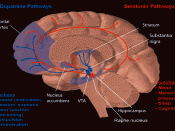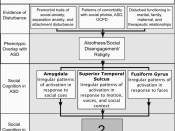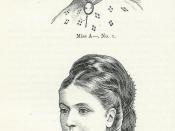How the Media Shapes stereotypes for Women The Media's prey: Women and the Sexual Struggle to have a perfect body A woman's make-up is her mask and her clothing her disguise, because at the end of it the entire real woman underneath remains hidden and unknown. The woman suppresses her inner beauty, unconsciously hiding from herself because her culture is influenced by what the media promotes. A woman's experience of her own body stems from the interaction of two sources: first, how she believes it compares with the magnified images of women that surround her on billboards and on television, in movies, magazines and newspapers; and second, how she has come to relate to her body from early on in her life. The media breeds and feeds off the public's materialistic nature in which women become the object of what is being sold, from sex to depression magazines put a price on the women's psyche.
If one were in the check out line at the grocery store, on the shelf before the register, several types of magazines geared toward women would exist, names such as: Vogue, Vanity, Elle, Bazaar, and Glamour. The magazines that are expected to catch ones eye are those projecting the catchy bright bold print and the self-help techniques, promising to enhance ones appearance. These magazines are geared to sell everything from birth control to toe nail polish. The so-called articles like the "do's and don'ts of fashion" embody the ideology that women must appear thin and stylish in order to seem beautiful to others. The magazines contain the trendiest clothing, accessories, and make-up, which portray these ideas because of the prototypical model types used throughout. Television, another media communicates through advertisements, selling body-enhancing products, which push the naive belief that being thin is being beautiful.


